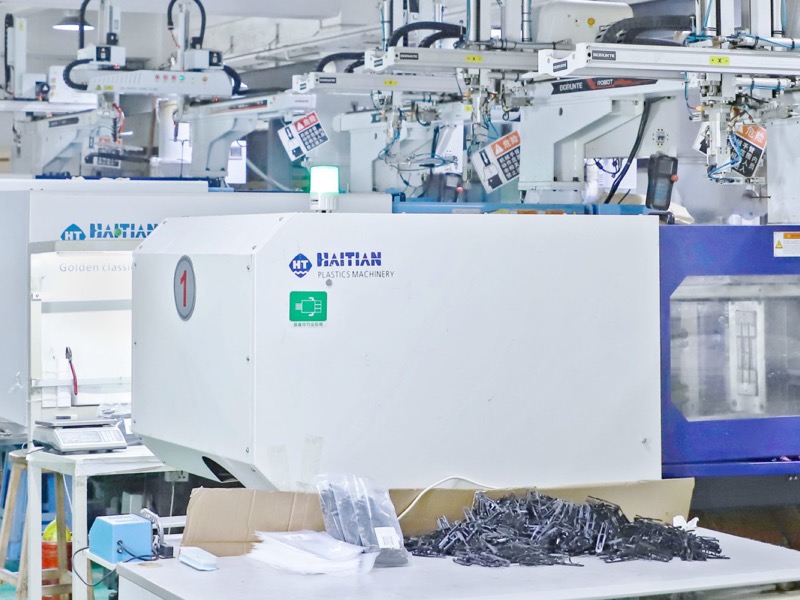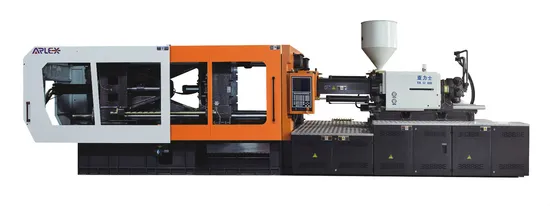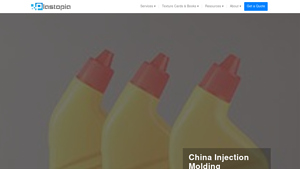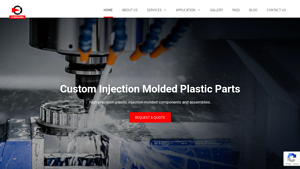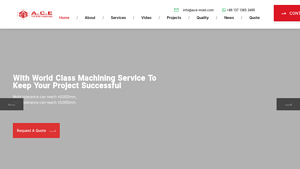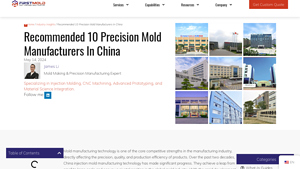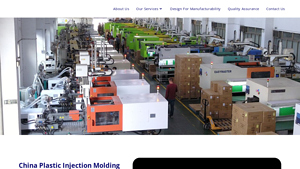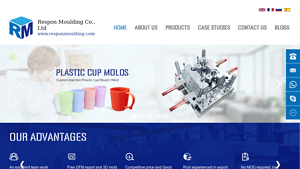Injection Moulding China Guide: Type, Cost, Top List…
Introduction: Navigating the Global Market for injection moulding china
Navigating the complexities of sourcing injection moulding in China can be a daunting challenge for international B2B buyers, particularly those from regions like Africa, South America, the Middle East, and Europe. The allure of lower costs and high-quality manufacturing often comes with the risk of miscommunication, quality discrepancies, and delivery delays. This guide is designed to empower you by providing a comprehensive overview of the injection moulding landscape in China, covering essential aspects such as types of moulding techniques, applications across various industries, effective supplier vetting processes, and a detailed analysis of cost structures.
As you delve into this resource, you will gain insights into how to identify reliable suppliers, negotiate better terms, and ensure that your specific requirements are met without compromising on quality. The guide also highlights the importance of understanding the local manufacturing environment, including regulatory considerations and cultural nuances that can impact your sourcing decisions.
By equipping yourself with the knowledge contained within this guide, you can make informed purchasing decisions that align with your business goals, ultimately enhancing your competitiveness in the global market. Whether you are sourcing components for automotive, electronics, or consumer products, this resource will serve as your roadmap to successful partnerships in the dynamic world of injection moulding in China.
Understanding injection moulding china Types and Variations
| Type Name | Key Distinguishing Features | Primary B2B Applications | Brief Pros & Cons for Buyers |
|---|---|---|---|
| Standard Injection Molding | High-volume production, consistent quality, quick turnaround | Consumer products, automotive parts | Pros: Cost-effective for large runs. Cons: Less flexibility in design changes. |
| Multi-Cavity Molding | Multiple parts produced simultaneously, reducing cycle time | Electronics, packaging, medical devices | Pros: Economical for high-volume needs. Cons: Initial mold costs can be higher. |
| Two-Shot Injection Molding | Combines two materials/colors in a single process | Automotive interiors, consumer electronics | Pros: Enhanced product functionality. Cons: More complex tooling required. |
| Overmolding | Additional material is molded over a substrate | Handles, grips, and electronic components | Pros: Improved grip and aesthetics. Cons: Requires precise control in the process. |
| Insert Molding | Inserts placed in the mold before injection | Automotive, aerospace, and industrial applications | Pros: Reduces assembly time. Cons: Higher initial setup costs. |
What Are the Characteristics of Standard Injection Molding?
Standard injection molding is the most widely used type of injection molding, ideal for producing large quantities of plastic parts with consistent quality. This process involves melting plastic pellets and injecting them into a mold, where they cool and solidify. It is particularly suitable for B2B applications in sectors like consumer goods and automotive, where high volumes and uniformity are critical. Buyers should consider the trade-off between cost and flexibility, as changes to design or production volume can be challenging and expensive once the mold is created.
Why Choose Multi-Cavity Molding for High-Volume Needs?
Multi-cavity molding allows manufacturers to create multiple identical parts in a single cycle, significantly reducing production time and costs. This method is particularly effective for products in the electronics and packaging industries, where high-volume runs are common. However, buyers must weigh the initial costs of creating multi-cavity molds against the long-term savings from increased production efficiency. This type of molding is best suited for products with stable designs and high demand.
How Does Two-Shot Injection Molding Enhance Product Functionality?
Two-shot injection molding combines two different materials or colors in a single part, enhancing both functionality and aesthetics. This method is particularly beneficial in the automotive and consumer electronics sectors, where complex designs and multi-material components are increasingly common. Buyers should note that while this process can lead to innovative product designs, it requires more complex tooling and careful planning, which can increase initial costs and production times.
What Advantages Does Overmolding Offer in Product Design?
Overmolding involves applying a second layer of material over an existing substrate, which can improve grip, functionality, and aesthetics. This technique is often used in products like handles and grips, as well as in electronic components to provide a more comfortable user experience. While the benefits include enhanced product appeal and usability, buyers should be aware that the overmolding process requires precise control and can complicate the manufacturing process, potentially leading to increased costs.
Why Consider Insert Molding for Assembly Efficiency?
Insert molding involves placing pre-made components, or inserts, into the mold before injecting plastic around them. This process is commonly used in industries such as automotive and aerospace, where it can significantly reduce assembly time and improve product durability. Buyers should consider the higher initial setup costs associated with insert molding, but the long-term savings in assembly and increased product integrity often justify this investment.
Key Industrial Applications of injection moulding china
| Industry/Sector | Specific Application of injection moulding china | Value/Benefit for the Business | Key Sourcing Considerations for this Application |
|---|---|---|---|
| Automotive | Production of interior and exterior components | High precision, reduced weight, and improved fuel efficiency | Supplier reliability, mold design expertise, and quality certifications |
| Electronics | Manufacturing casings and components for devices | Cost-effective mass production and design flexibility | Material selection, lead times, and compliance with international standards |
| Consumer Goods | Creation of packaging and household items | Enhanced product durability and aesthetic appeal | Customization capabilities, production volume, and shipping logistics |
| Medical Devices | Production of surgical instruments and housings | High precision and compliance with health regulations | Quality control processes, material safety certifications, and rapid prototyping |
| Industrial Equipment | Components for machinery and tools | Improved efficiency and reduced operational costs | Technical support, after-sales service, and scalability of production |
How is Injection Moulding China Used in the Automotive Industry?
In the automotive sector, injection moulding is pivotal for producing both interior and exterior components, such as dashboards, door panels, and bumpers. The use of high-precision molds allows manufacturers to create lightweight parts that contribute to improved fuel efficiency. For international B2B buyers, especially from regions like Africa and South America, it is crucial to consider supplier reliability and mold design expertise, as any defects could result in significant financial losses and production delays.
What are the Applications of Injection Moulding in Electronics?
In the electronics industry, injection moulding is utilized to manufacture casings and internal components for devices, such as smartphones and laptops. This process enables cost-effective mass production while allowing for intricate designs and features that enhance the product’s functionality. Buyers from Europe and the Middle East should prioritize material selection and compliance with international standards to ensure safety and performance in their products.
How Does Injection Moulding Benefit Consumer Goods Production?
For consumer goods, injection moulding plays a vital role in creating packaging and durable household items. The technique not only enhances the durability of products but also allows for aesthetically pleasing designs that attract consumers. B2B buyers should focus on customization capabilities and production volume to align with market demands, while also considering shipping logistics to minimize costs and delivery times.
In What Ways is Injection Moulding Used for Medical Devices?
In the medical devices sector, injection moulding is essential for producing surgical instruments and housings that require high precision and strict compliance with health regulations. The ability to create complex geometries and maintain tight tolerances ensures the safety and efficacy of medical products. International buyers must scrutinize suppliers’ quality control processes and material safety certifications, as any non-compliance could have serious implications for patient safety.
What Role Does Injection Moulding Play in Industrial Equipment Manufacturing?
Injection moulding is increasingly used in the production of components for machinery and tools within the industrial equipment sector. This method offers improved efficiency and reduced operational costs by allowing for the rapid production of high-quality parts. Buyers should look for suppliers that provide technical support and after-sales service, as well as the ability to scale production in response to fluctuating demand.
3 Common User Pain Points for ‘injection moulding china’ & Their Solutions
Scenario 1: Quality Assurance in Injection Moulding Parts
The Problem: A common issue that B2B buyers face when sourcing injection moulding services from China is the inconsistency in product quality. Many buyers report receiving parts that do not meet their specifications or that have defects, leading to costly rework and delays in production. This is particularly concerning for industries such as automotive and electronics, where precision and reliability are paramount. Buyers often feel frustrated and anxious about the potential risks associated with outsourcing manufacturing to a foreign supplier.
The Solution: To mitigate quality concerns, buyers should prioritize working with suppliers that have established quality control systems and certifications, such as ISO 9001. Request detailed documentation of the supplier’s quality assurance processes, including inspection protocols and testing methods. Additionally, consider conducting an initial pilot run or prototype phase before placing larger orders. This allows for the identification of any issues early on, enabling adjustments to be made without significant financial impact. Regular communication and site visits can also foster a better relationship with the supplier, ensuring that quality standards are maintained throughout the production process.
Scenario 2: Navigating Language and Communication Barriers
The Problem: Effective communication is crucial in B2B transactions, yet many international buyers report difficulties when dealing with Chinese manufacturers. Language barriers can lead to misunderstandings regarding product specifications, timelines, and pricing, resulting in costly mistakes and frustrations. Buyers may find that their inquiries are met with vague responses, making it challenging to assess the supplier’s capabilities and reliability.
The Solution: To overcome communication challenges, buyers should seek suppliers who provide bilingual support or have team members with engineering backgrounds fluent in English. When initiating contact, clearly outline your requirements and expectations in writing, supplemented by diagrams or samples where possible. This minimizes the risk of misinterpretation. Additionally, consider using collaboration tools that facilitate clearer communication, such as video conferencing or project management software, to maintain ongoing dialogue. Establishing a single point of contact within the supplier’s organization can further streamline communication and ensure that all inquiries are addressed promptly.
Scenario 3: Understanding Cost Structures and Pricing Transparency
The Problem: Many buyers entering the Chinese injection moulding market are often surprised by the final costs of production. While initial quotes may appear attractive, hidden costs related to material selection, shipping, and tariffs can significantly increase the overall expense. This lack of transparency can lead to budget overruns and strain supplier relationships, leaving buyers feeling misled and distrustful.
The Solution: To achieve greater pricing transparency, buyers should engage in thorough discussions with potential suppliers about their cost structures. Request detailed breakdowns of quotes, including material costs, labor, and any additional fees. Compare multiple suppliers to identify discrepancies and understand the market rate for the required services. It’s also beneficial to consider the total landed cost, which encompasses production, shipping, and tariffs, rather than focusing solely on the unit price. Engaging a sourcing agent who specializes in Chinese manufacturing can also provide valuable insights and help negotiate better terms, ensuring that the final agreement aligns with your budget and expectations.
Strategic Material Selection Guide for injection moulding china
What Are the Key Properties of Common Materials Used in Injection Moulding in China?
When selecting materials for injection moulding, international B2B buyers must consider several factors, including the properties of the materials, their suitability for specific applications, and the implications for manufacturing processes. Here, we analyze four common materials used in injection moulding in China, focusing on their key properties, advantages and disadvantages, and considerations for global buyers.
1. Acrylonitrile Butadiene Styrene (ABS)
ABS is a widely used thermoplastic known for its toughness and impact resistance. It can withstand temperatures up to 80°C and offers good chemical resistance, making it suitable for various applications, from automotive parts to consumer goods.
Pros: ABS is relatively low-cost, easy to process, and provides excellent surface finish. Its durability makes it suitable for products requiring a balance of strength and flexibility.
Cons: While ABS has good impact resistance, it can be less suitable for high-temperature applications due to its lower heat resistance compared to other materials. Additionally, it is not as environmentally friendly as some alternatives.
Impact on Application: ABS is compatible with various media, making it ideal for products exposed to moisture and chemicals, but it may not perform well in extreme conditions.
Considerations for Buyers: Buyers from regions like Africa and South America should ensure compliance with local regulations regarding chemical safety and environmental impact. Common standards such as ASTM D3965 for plastic materials may apply.
2. Polypropylene (PP)
Polypropylene is a versatile thermoplastic known for its lightweight and resistance to moisture, chemicals, and fatigue. It can withstand temperatures up to 100°C and is often used in packaging, automotive components, and household goods.
Pros: PP is cost-effective, has a high strength-to-weight ratio, and offers excellent resistance to fatigue. Its recyclability adds to its appeal for environmentally conscious buyers.
Cons: While PP has good chemical resistance, it can be sensitive to UV light and may degrade over time when exposed to sunlight. Its impact resistance can also be lower than that of ABS.
Impact on Application: PP is suitable for applications requiring moisture resistance but may require additives for UV stability in outdoor products.
Considerations for Buyers: International buyers should be aware of compliance with food safety standards (e.g., FDA regulations) if used for packaging. Knowledge of local recycling capabilities is also essential for sustainability.
3. Polycarbonate (PC)
Polycarbonate is a high-performance thermoplastic known for its exceptional impact resistance and optical clarity. It can withstand temperatures up to 135°C and is often used in applications like safety glasses, automotive parts, and electronic housings.
Pros: PC offers superior strength and durability, making it ideal for applications requiring high impact resistance. Its clarity allows for use in optical applications.
Cons: The higher cost of polycarbonate compared to other materials can be a drawback. It is also sensitive to scratching and may require coatings for enhanced durability.
Impact on Application: PC is suitable for applications exposed to high impacts and temperatures, but its susceptibility to scratching can limit its use in certain environments.
Considerations for Buyers: Buyers should ensure that polycarbonate products meet relevant safety standards, such as ANSI Z87.1 for eyewear. Understanding the local market’s acceptance of higher-cost materials is also crucial.
4. Nylon (Polyamide)
Nylon is a strong, flexible thermoplastic known for its excellent abrasion resistance and toughness. It can withstand temperatures up to 120°C and is commonly used in automotive, electrical, and industrial applications.
Pros: Nylon offers high strength, good chemical resistance, and excellent wear properties. It is suitable for applications requiring durability and flexibility.
Cons: Nylon can absorb moisture, which may affect its dimensional stability. It is also more expensive than some other thermoplastics, which could impact cost-sensitive projects.
Impact on Application: Nylon’s moisture absorption can be a consideration in applications where dimensional stability is critical, such as in precision parts.
Considerations for Buyers: Buyers should be aware of the moisture sensitivity of nylon and consider local climate conditions. Familiarity with international standards like ISO 1874 for nylon can aid in compliance.
Summary Table of Material Selection for Injection Moulding in China
| Material | Typical Use Case for injection moulding china | Key Advantage | Key Disadvantage/Limitation | Relative Cost (Low/Med/High) |
|---|---|---|---|---|
| Acrylonitrile Butadiene Styrene (ABS) | Automotive parts, consumer goods | Low cost and good surface finish | Lower heat resistance | Low |
| Polypropylene (PP) | Packaging, automotive components | Lightweight and cost-effective | Sensitive to UV light | Low |
| Polycarbonate (PC) | Safety glasses, electronic housings | High impact resistance | Higher cost and scratch sensitivity | High |
| Nylon (Polyamide) | Automotive, electrical components | High strength and durability | Moisture absorption | Med |
This strategic material selection guide serves as a valuable resource for international B2B buyers, helping them make informed decisions based on material properties, application suitability, and compliance considerations.
In-depth Look: Manufacturing Processes and Quality Assurance for injection moulding china
What Are the Key Manufacturing Processes in Injection Moulding in China?
The injection moulding process in China consists of several critical stages that ensure the production of high-quality plastic components. Understanding these stages is essential for international B2B buyers looking to partner with Chinese manufacturers.
How Is Material Prepared in Injection Moulding?
The first step in the injection moulding process is material preparation. This involves selecting the appropriate thermoplastic or thermosetting polymers based on the final product’s requirements. The material is then dried to remove moisture, which can adversely affect the quality of the final product. Advanced manufacturers often employ automated drying systems to ensure uniform moisture content.
Once dried, the material is fed into the injection moulding machine’s hopper. Here, it is heated to its melting point and mixed to achieve a homogeneous melt. This step is crucial as it directly impacts the flow characteristics of the plastic during the injection process.
What Techniques Are Used During the Forming Stage?
The forming stage is where the melted plastic is injected into a pre-designed mould. The mould, typically made from steel or aluminum, is precision-engineered to exact specifications. The injection machine applies high pressure to inject the plastic quickly and evenly into the mould cavity.
Common techniques in this stage include:
- Single Injection Moulding: The most prevalent method, where a single type of material is injected into the mould.
- Two-Shot Injection Moulding: Involves injecting two different materials or colors in a single moulding cycle, allowing for complex designs and better product functionality.
- Overmoulding: A technique where a second material is injected over an existing component, enhancing grip or aesthetics.
How Is Assembly and Finishing Handled?
Post-injection, the mould is cooled, allowing the plastic to solidify before ejection. The ejection system, which may include ejector pins or plates, removes the finished part from the mould.
After ejection, the components often undergo several finishing processes, including:
- Trimming: Removing excess material, known as flash, that may have formed during injection.
- Surface Treatment: Techniques such as sanding, polishing, or coating to enhance aesthetics and functionality.
- Assembly: If the product consists of multiple parts, they may be assembled in-house, streamlining the supply chain.
What Quality Assurance Practices Are Essential in Injection Moulding?
Quality assurance is vital in ensuring that the final products meet international standards and customer expectations. Chinese manufacturers typically adhere to various quality control (QC) measures throughout the production process.
Which International Standards Are Relevant for Quality Assurance?
Many Chinese injection moulding companies hold certifications such as ISO 9001, which establishes a framework for effective quality management systems. Other relevant certifications may include CE marking for products sold in the European Union and specific industry standards like API for the oil and gas sector.
What Are the Key QC Checkpoints in the Manufacturing Process?
Quality control is integrated at multiple stages of the manufacturing process, often categorized into:
- Incoming Quality Control (IQC): Raw materials are inspected for conformity with specified standards before they are used in production. This initial step is crucial to avoid defects in the final products.
- In-Process Quality Control (IPQC): During manufacturing, regular checks are performed to monitor parameters such as temperature, pressure, and cycle times. This ensures that any deviations are quickly identified and corrected.
- Final Quality Control (FQC): After production, finished products undergo thorough inspections, including dimensional checks and functional testing, to ensure they meet quality standards.
How Can B2B Buyers Verify Supplier QC?
B2B buyers can take several steps to verify the quality control processes of Chinese manufacturers:
- Conduct Audits: Before entering a partnership, perform on-site audits to evaluate the manufacturing facilities, processes, and quality management systems.
- Request Quality Reports: Ask suppliers for documentation of their quality control processes, including inspection reports and compliance certificates.
- Engage Third-Party Inspectors: Employ independent inspection agencies to assess the products during or post-manufacturing. This adds an extra layer of assurance regarding quality and compliance.
What Are the Nuances of QC and Certifications for International Buyers?
For international buyers, particularly from Africa, South America, the Middle East, and Europe, understanding the nuances of quality control and certifications is crucial. Buyers should be aware of:
- Local Standards vs. International Standards: Ensure that the manufacturer’s certifications align with the regulations and standards applicable in the buyer’s home country or region.
- Documentation: Maintain a comprehensive record of all certifications and inspection reports, as these may be required for customs clearance or compliance audits.
- Cultural Differences: Be prepared for potential differences in communication and business practices. Establishing clear expectations regarding quality standards and timelines can help mitigate misunderstandings.
Conclusion: Why Quality Assurance is Critical for Successful Injection Moulding Partnerships
In summary, understanding the manufacturing processes and quality assurance practices in Chinese injection moulding is essential for international B2B buyers. By recognizing the stages of production, the importance of quality control, and the means of verifying supplier capabilities, buyers can make informed decisions that lead to successful partnerships. Leveraging these insights not only enhances product quality but also fosters trust and reliability in global supply chains.
Practical Sourcing Guide: A Step-by-Step Checklist for ‘injection moulding china’
Introduction
This practical sourcing guide aims to assist international B2B buyers in effectively procuring injection moulding services from China. With its competitive pricing and advanced manufacturing capabilities, China has become a preferred destination for injection moulding. However, navigating this market requires careful planning and due diligence to ensure quality and reliability.
Step 1: Define Your Technical Specifications
Begin by clearly outlining the technical requirements for your injection moulded parts. This includes material specifications, dimensions, tolerances, and any other relevant details. Having precise specifications helps suppliers understand your needs and minimizes the risk of errors during production.
- Considerations: Identify the type of plastic and its properties, such as durability and heat resistance.
- Documentation: Prepare detailed drawings and CAD models to facilitate accurate quoting and prototyping.
Step 2: Research Potential Suppliers
Conduct thorough research to identify reputable injection moulding companies in China. Look for suppliers with proven track records in your industry, and prioritize those who specialize in the specific types of components you require.
- Sources: Utilize trade directories, industry forums, and recommendations from peers to compile a list of potential suppliers.
- Check Reviews: Read customer testimonials and case studies to gauge reliability and quality.
Step 3: Verify Supplier Certifications
Before finalizing a supplier, ensure they hold relevant industry certifications, such as ISO 9001. These certifications indicate that the supplier adheres to quality management standards, which is crucial for maintaining product integrity.
- Documentation: Request copies of certifications and verify them with the issuing organizations.
- Quality Assurance: Check if the supplier has additional certifications relevant to your industry, such as IATF 16949 for automotive components.
Step 4: Request Quotes and Compare Pricing
Once you have identified potential suppliers, request detailed quotes that include pricing, lead times, and payment terms. Comparing multiple quotes allows you to assess the cost-effectiveness of each supplier while considering the quality of service.
- Transparency: Ensure that the quotes break down costs, including tooling, materials, and any additional services.
- Negotiation: Be prepared to negotiate terms based on the quotes received to find the best overall value.
Step 5: Evaluate Production Capabilities
Assess the production capabilities of your shortlisted suppliers. Inquire about their machinery, workforce experience, and capacity to handle your order volume within your desired timelines.
- Facility Visits: If possible, conduct site visits or virtual tours to evaluate the production environment and technology used.
- Production Processes: Understand the supplier’s approach to quality control and how they manage production timelines.
Step 6: Establish Communication Protocols
Effective communication is key to a successful partnership. Establish clear lines of communication and designate points of contact on both sides to facilitate smooth interactions throughout the project lifecycle.
- Language Proficiency: Ensure that your contact at the supplier has a good command of English or your preferred language to avoid misunderstandings.
- Regular Updates: Set expectations for regular updates on project status and any potential issues that may arise.
Step 7: Conduct a Trial Order
Before committing to larger orders, consider placing a trial order to assess the supplier’s capabilities and the quality of their products. This step allows you to evaluate their responsiveness and production quality firsthand.
- Feedback Loop: Use this trial to provide feedback and address any issues before scaling up your orders.
- Quality Check: Conduct thorough inspections of the trial products to ensure they meet your specifications.
By following these steps, B2B buyers can navigate the complexities of sourcing injection moulding services from China more effectively, ensuring they select a reliable partner that meets their production needs.
Comprehensive Cost and Pricing Analysis for injection moulding china Sourcing
What Are the Key Cost Components in Injection Moulding Sourcing from China?
Understanding the cost structure of injection moulding in China is crucial for international B2B buyers aiming to optimize their sourcing strategies. The primary cost components include:
-
Materials: The choice of resin significantly impacts costs. While basic plastics are relatively inexpensive, specialized materials (e.g., high-performance polymers) can increase material costs by 50% to 100%. Buyers should consider the specific requirements of their projects to choose the most cost-effective materials.
-
Labor: Labor costs in China are generally lower than in Europe or the Americas, contributing to overall cost savings. However, the complexity of the moulding process and the expertise required can vary. Skilled labor for high-precision moulds may demand higher wages.
-
Manufacturing Overhead: This includes utilities, facility maintenance, and administrative expenses. Medium-sized companies often have lower overhead costs, which can translate to more competitive pricing compared to larger manufacturers.
-
Tooling: Tooling costs are a significant part of the injection moulding process. The complexity of the mould design affects tooling prices, with custom moulds generally requiring higher initial investments. Buyers must consider this as a long-term investment, as high-quality moulds lead to better production efficiency.
-
Quality Control (QC): Implementing rigorous QC measures can add to costs but is essential for ensuring product quality and reducing defects. Buyers should inquire about the supplier’s quality certifications (e.g., ISO 9001) to ensure compliance with international standards.
-
Logistics: Shipping costs can vary based on the destination and the chosen Incoterms. Understanding these costs is crucial, especially for buyers from regions like Africa and South America, where shipping logistics may be more complex.
-
Margin: Suppliers typically factor in a profit margin based on their operational costs and market conditions. Understanding this margin can aid in negotiations.
How Do Price Influencers Affect Injection Moulding Costs?
Several factors influence pricing in injection moulding, which buyers must consider:
-
Volume/MOQ: Higher order volumes can lead to lower per-unit costs, as fixed costs are spread over more units. Buyers should assess their demand to leverage better pricing.
-
Specifications and Customization: Highly customized parts or intricate designs often increase costs due to additional engineering and tooling requirements. Clear specifications can help suppliers provide accurate quotes.
-
Quality and Certifications: Higher quality standards and certifications can elevate costs but are crucial for meeting international regulations. Buyers should weigh the costs against the benefits of enhanced product reliability.
-
Supplier Factors: The reputation and experience of the supplier can significantly influence pricing. Established suppliers often provide better quality assurance but may charge a premium.
-
Incoterms: The choice of Incoterms affects the overall cost structure, including responsibilities for shipping, insurance, and customs duties. Understanding these terms is vital for accurate cost assessments.
What Are Effective Buyer Tips for Negotiating Injection Moulding Prices?
To ensure cost-efficiency and value in injection moulding sourcing, buyers should consider the following strategies:
-
Negotiate Clearly: Engage in open discussions about pricing structures, cost breakdowns, and potential discounts for larger orders. Establishing a good relationship with suppliers can facilitate better terms.
-
Evaluate Total Cost of Ownership (TCO): Consider not just the upfront costs but also long-term implications, such as durability, maintenance, and potential rework costs. A lower initial price may lead to higher TCO if the quality is subpar.
-
Understand Pricing Nuances for International Transactions: Currency fluctuations and economic conditions in the supplier’s country can impact pricing. Buyers should remain aware of these factors, especially when sourcing from emerging markets.
-
Research and Compare Suppliers: Conduct thorough due diligence on multiple suppliers to gauge their pricing, quality, and service levels. Collecting quotes and understanding the competitive landscape will aid in making informed decisions.
Conclusion
While sourcing injection moulding from China can offer significant cost advantages, buyers must navigate a complex landscape of pricing components and influencers. By understanding these elements and employing strategic negotiation tactics, international buyers can maximize their sourcing outcomes and ensure quality products that meet their specifications. Always remember that indicative prices can fluctuate based on market conditions and supplier capabilities, so continuous assessment and flexibility are key to successful sourcing.
Alternatives Analysis: Comparing injection moulding china With Other Solutions
Understanding Alternative Solutions to Injection Moulding in China
When considering manufacturing options for plastic components, it’s crucial to evaluate various methods to ensure the best fit for your business needs. Injection moulding in China has gained popularity due to its cost-effectiveness and high-quality outputs. However, alternatives exist that may suit specific requirements better, depending on factors such as production volume, material type, and project timelines. This analysis compares injection moulding in China with two viable alternatives: 3D Printing and Blow Moulding.
| Comparison Aspect | Injection Moulding China | 3D Printing | Blow Moulding |
|---|---|---|---|
| Performance | High precision, rapid production | Moderate precision, slower production | High precision for hollow parts |
| Cost | Low cost for large volumes; higher for small runs | Higher per unit cost; economical for prototypes | Moderate cost, effective for larger runs |
| Ease of Implementation | Requires setup and tooling, longer lead times | Minimal setup, quick adjustments | Requires specific molds, moderate lead time |
| Maintenance | Moderate; molds require care | Low; minimal maintenance needed | Moderate; molds need regular inspections |
| Best Use Case | High-volume production of complex parts | Prototyping, low-volume runs, custom designs | Producing hollow plastic items like bottles and containers |
In-Depth Look at Alternative Solutions
3D Printing
3D printing, also known as additive manufacturing, is an innovative method that builds parts layer by layer. This technique is particularly advantageous for creating prototypes or custom designs due to its minimal setup requirements. The primary advantages include flexibility in design changes and faster turnaround times for initial samples. However, the per-unit cost tends to be higher, making it less economical for large production runs. Additionally, while it offers decent precision, it may not match the surface finish or material properties achieved through injection moulding.
Blow Moulding
Blow moulding is another viable alternative, primarily used for creating hollow plastic parts such as bottles and containers. This method excels in high-volume production scenarios, where it can produce large quantities quickly and at a relatively low cost per unit. The process requires specific moulds, which can be expensive to produce initially, but the costs decrease significantly as production scales. Blow moulding is less suitable for complex shapes compared to injection moulding and may not provide the same level of detail for intricate designs.
Making the Right Choice for Your Business Needs
Selecting the appropriate manufacturing method depends heavily on your specific project requirements. For high-volume production with complex geometries, injection moulding in China remains a strong contender due to its precision and cost-effectiveness. Conversely, if your focus is on rapid prototyping or customized components, 3D printing may be the better choice, despite its higher costs. For businesses looking to produce large quantities of hollow items, blow moulding presents a balanced option between cost and production speed.
In conclusion, B2B buyers should carefully assess their project parameters, including volume, complexity, and budget constraints, to determine the most suitable manufacturing solution. Each method has its unique advantages and limitations, and understanding these can lead to more informed decision-making and ultimately, a successful production outcome.
Essential Technical Properties and Trade Terminology for injection moulding china
What Are the Essential Technical Properties of Injection Moulding in China?
Understanding the technical properties of injection moulding is crucial for international B2B buyers looking to source quality products from China. Here are key specifications that significantly impact the production process and the final product quality:
1. Material Grade
The choice of material grade is fundamental in injection moulding, as it determines the strength, durability, and overall performance of the final product. Common materials include ABS, polypropylene, and polycarbonate, each suited for specific applications. Selecting the right material is essential for meeting industry standards and ensuring product reliability, particularly in sectors like automotive and electronics.
2. Tolerance
Tolerance refers to the allowable deviation from a specified dimension in the moulded part. It is critical in ensuring parts fit together correctly and function as intended. In injection moulding, typical tolerances can range from ±0.005mm to ±0.02mm, depending on the complexity of the design. High precision is particularly important for components that require tight fits, as errors can lead to costly rework and delays.
3. Cycle Time
Cycle time is the total time required to produce a single part, from the injection of material to the ejection of the finished product. Shorter cycle times are advantageous for increasing production efficiency and reducing costs. Understanding cycle times helps B2B buyers estimate lead times and plan their inventory management effectively.
4. Surface Finish
The surface finish of a moulded part affects both its aesthetic appeal and functionality. Different finishes, such as matte or gloss, can be achieved through various techniques, including texturing or polishing. Buyers should specify the desired surface finish to ensure the final product meets their branding and performance requirements.
5. Mould Design Complexity
The complexity of the mould design impacts the manufacturing process and costs. Simple designs may require fewer components and less time to produce, while complex moulds with multiple cavities or intricate features may increase production costs and lead times. Understanding the implications of mould complexity is essential for making informed purchasing decisions.
What Common Trade Terms Should B2B Buyers Know in Injection Moulding?
Familiarity with industry jargon is vital for effective communication and negotiation in the injection moulding sector. Here are some commonly used terms:
1. OEM (Original Equipment Manufacturer)
OEM refers to companies that produce parts or equipment that may be marketed by another manufacturer. For buyers, partnering with OEMs can streamline production and ensure quality, as these manufacturers typically have specialized expertise in specific components.
2. MOQ (Minimum Order Quantity)
MOQ indicates the smallest quantity of products that a supplier is willing to sell. Understanding MOQ is crucial for buyers to manage their inventory and cash flow effectively. Suppliers in China often have lower MOQs for custom parts, making it easier for small and medium-sized enterprises to access quality products.
3. RFQ (Request for Quotation)
An RFQ is a standard business process for soliciting price quotes from suppliers. It typically includes detailed specifications, quantities, and delivery timelines. B2B buyers should prepare comprehensive RFQs to receive accurate quotes and evaluate multiple suppliers effectively.
4. Incoterms (International Commercial Terms)
Incoterms are a set of international rules that define the responsibilities of buyers and sellers in international transactions. Understanding these terms, such as FOB (Free on Board) or CIF (Cost, Insurance, and Freight), is essential for managing shipping costs and risk, ensuring clarity in contractual obligations.
5. DFM (Design for Manufacturability)
DFM refers to the process of designing products in a way that makes them easy to manufacture. Incorporating DFM principles can help reduce production costs and lead times, ultimately benefiting buyers by ensuring a smoother manufacturing process.
By grasping these technical properties and industry terms, B2B buyers can navigate the complexities of sourcing injection moulded products from China more effectively, ensuring they make informed decisions that align with their business objectives.
Navigating Market Dynamics and Sourcing Trends in the injection moulding china Sector
What Are the Current Market Dynamics and Key Trends in the China Injection Moulding Sector?
The injection moulding sector in China is experiencing significant growth, driven by globalization and the increasing demand for custom plastic components across various industries, including automotive, electronics, and consumer goods. Key global drivers include the need for cost-effective manufacturing solutions and the rise of advanced technologies such as Industry 4.0, which enhances production efficiency through automation and data analytics. International buyers, particularly from Africa, South America, the Middle East, and Europe, are increasingly seeking partnerships with Chinese manufacturers that can offer high-quality products at competitive prices.
Emerging B2B tech trends include the integration of smart manufacturing practices, which leverage IoT and AI to optimize production processes. This shift not only reduces lead times but also enhances quality control, allowing for rapid prototyping and adjustments based on real-time data. Additionally, the trend towards digital platforms for sourcing and procurement is on the rise, enabling buyers to evaluate multiple suppliers, compare prices, and streamline communication. Understanding these dynamics allows international buyers to navigate the competitive landscape effectively and make informed sourcing decisions.
How Is Sustainability and Ethical Sourcing Impacting the Injection Moulding Sector in China?
Sustainability is becoming a central theme in the injection moulding industry, with increasing awareness of environmental impacts prompting buyers to prioritize ethical sourcing. The environmental footprint of plastic manufacturing, including waste generation and carbon emissions, has led many companies to adopt more sustainable practices. This shift is not only beneficial for the planet but also aligns with consumer preferences for environmentally responsible products.
Buyers are now looking for suppliers that utilize eco-friendly materials, such as recycled plastics or bioplastics, and are certified by recognized environmental standards. Certifications like ISO 14001 for environmental management systems and other ‘green’ credentials serve as indicators of a supplier’s commitment to sustainability. Furthermore, ethical supply chains are essential for maintaining brand reputation; companies that can demonstrate responsible sourcing practices are more likely to gain trust and loyalty from their customers.
What Is the Historical Context of Injection Moulding in China That Affects Current B2B Practices?
The evolution of the injection moulding industry in China dates back several decades, with significant advancements occurring in the 1990s when China began embracing market reforms and opening up to foreign investments. This transformation enabled the country to become a global manufacturing powerhouse, particularly in the plastic injection moulding sector. Over the years, Chinese manufacturers have invested heavily in modern machinery and technology, improving their production capabilities and establishing a reputation for cost-effective, high-quality products.
Today, China’s injection moulding industry is characterized by a mix of large-scale manufacturers and smaller, specialized firms that cater to niche markets. This diverse landscape provides international buyers with a wide range of sourcing options, from high-volume production runs to customized components, reflecting the adaptability and growth of the sector in response to global market demands. Understanding this historical context is crucial for B2B buyers as it informs their choices and expectations regarding supplier capabilities and market dynamics.
Frequently Asked Questions (FAQs) for B2B Buyers of injection moulding china
-
How do I ensure the quality of injection molded parts sourced from China?
To ensure high quality in injection molded parts, start by vetting suppliers thoroughly. Look for manufacturers with ISO certifications and a robust quality assurance process. Request samples and inspect them for tolerances and finish. Establish clear specifications and quality standards upfront, and consider third-party inspections during production and before shipment. Building a strong relationship with your supplier can also help in maintaining quality throughout the production cycle. -
What are the typical minimum order quantities (MOQs) for injection molding in China?
MOQs can vary significantly depending on the supplier and the complexity of the mold. Generally, for custom plastic parts, MOQs range from 1,000 to 5,000 pieces. However, some manufacturers may accommodate lower quantities for a higher unit price. It’s advisable to communicate your needs upfront to negotiate favorable terms or explore options with suppliers that specialize in small to medium batch production. -
What payment terms should I expect when working with Chinese injection molding suppliers?
Payment terms can differ by supplier, but common practices include a 30% deposit prior to production and the remaining 70% before shipment. Some suppliers may offer flexible terms based on order size or long-term relationships. It’s essential to clarify payment methods (e.g., bank transfer, PayPal) and any currency exchange considerations, especially if you’re dealing with fluctuating rates. -
How can I customize my injection molded parts effectively?
Customization of injection molded parts starts with a clear design brief. Work closely with your supplier’s design and engineering teams to ensure that your specifications are achievable. Utilize CAD software for detailed designs and prototypes. Discuss material options, surface finishes, and any additional features you need. A prototype phase can help identify potential issues before full-scale production begins, ensuring your final product meets expectations. -
What logistics considerations should I keep in mind when importing injection molded parts from China?
When importing from China, consider shipping methods, costs, and lead times. Sea freight is often more economical for larger orders, while air freight is faster but pricier. Factor in customs duties and taxes applicable in your country. It’s beneficial to work with logistics partners experienced in international shipping to navigate documentation, tariffs, and delivery timelines effectively, ensuring your products arrive on schedule. -
What are the risks associated with sourcing injection molding from China, and how can I mitigate them?
Risks include quality inconsistencies, communication barriers, and potential delays. To mitigate these, choose suppliers with proven track records and relevant certifications. Establish detailed contracts that outline expectations and penalties for non-compliance. Consider conducting on-site visits or using third-party quality inspectors to oversee production. Clear communication and regular updates can help address issues proactively before they escalate. -
How do I evaluate and select the right injection molding supplier in China?
Start by researching suppliers through online directories and industry referrals. Evaluate their experience, certifications, production capabilities, and customer reviews. Request quotes and compare pricing, but also consider factors like lead times, communication responsiveness, and after-sales support. Engaging in initial small projects can serve as a trial to assess their reliability before committing to larger orders. -
What should I know about intellectual property protection when sourcing injection molded parts from China?
Intellectual property (IP) protection is crucial when dealing with Chinese manufacturers. Ensure that you have legal agreements in place, such as Non-Disclosure Agreements (NDAs) and contracts that specifically outline IP ownership. Consider registering trademarks or patents in China to strengthen your legal standing. Regular communication and monitoring of your designs can help prevent unauthorized use or replication of your products.
Important Disclaimer & Terms of Use
⚠️ Important Disclaimer
The information provided in this guide, including content regarding manufacturers, technical specifications, and market analysis, is for informational and educational purposes only. It does not constitute professional procurement advice, financial advice, or legal advice.
While we have made every effort to ensure the accuracy and timeliness of the information, we are not responsible for any errors, omissions, or outdated information. Market conditions, company details, and technical standards are subject to change.
B2B buyers must conduct their own independent and thorough due diligence before making any purchasing decisions. This includes contacting suppliers directly, verifying certifications, requesting samples, and seeking professional consultation. The risk of relying on any information in this guide is borne solely by the reader.
Top 7 Injection Moulding China Manufacturers & Suppliers List
1. Plastopia – Injection Molding Solutions
Domain: plastopialtd.com
Registered: 2015 (10 years)
Introduction: This company, Plastopia – Injection Molding Solutions, is a notable entity in the market. For specific product details, it is recommended to visit their website directly.
2. Ecomolding – High-Precision Plastic Injection Molding
Domain: ecomolding.com
Registered: 2014 (11 years)
Introduction: Ecomolding specializes in high-precision plastic injection molded components and assemblies. They offer a comprehensive range of services including plastic injection molding, injection mold design, and custom mold making. The company focuses on various applications such as automotive, home appliances, electronics, and general industrial OEM applications. Their factory spans over 2000 square meters…
3. ACE Mould – Precision Injection Molding Solutions
Domain: ace-mold.com
Registered: 2020 (5 years)
Introduction: ACE Mould specializes in plastic injection molding and offers a range of services including mould design, mould making, and various types of injection moulding such as precision CNC components, die casting, and blow molding. Key product offerings include high precision moulds for aerospace, automotive, cosmetics, engineering, home appliances, and medical applications. The company boasts over 25 ye…
4. First Mold – Automotive & Aerospace Molds
Domain: firstmold.com
Registered: 2016 (9 years)
Introduction: Mold Types: Injection molds, die-casting molds; Industries: Automotive, aerospace, medical, consumer electronics; Headquarters: Zhongshan, Guangdong; Established: 2011; Factory Area: Over 30,000 square meters; Main Businesses: Automotive molds, aerospace molds, consumer electronics molds, multi-industry injection molded product production, aluminum product models, plastic hardware parts; Services:…
5. HanKing Mould – Plastic Injection Moulds
Domain: hanking-mould.com
Registered: 2010 (15 years)
Introduction: HanKing Mould is a professional plastic injection mould manufacturer based in China, offering a wide range of plastic moulding services and products. Key product details include: 1. Types of Moulds: Plastic Injection Moulds, Micro Injection Moulds, Precision Moulds, Automotive Moulds, Electronics Moulds, 2K Moulds, Home Appliance Moulds, Multi Cavity Moulds, Industrial Moulds, Insert Moulding, Med…
6. Qmolding – Plastic Injection Molding & LSR Solutions
Domain: qmolding.com
Registered: 2019 (6 years)
Introduction: Qmolding offers a range of services including: 1. Plastic Injection Molding – utilizes plastic resin pellets melted and formed into specific shapes. 2. Liquid Silicone Rubber (LSR) – used for molding rubber parts, preferred for part production. 3. Overmolding – combines two materials in one product. 4. Insert Molding – allows melted material to be injected into pre-made custom inserts. 5. Plastic …
7. Respon Moulding – Rapid Tooling & Injection Molding Services
Domain: responmoulding.com
Registered: 2019 (6 years)
Introduction: This company, Respon Moulding – Rapid Tooling & Injection Molding Services, is a notable entity in the market. For specific product details, it is recommended to visit their website directly.
Strategic Sourcing Conclusion and Outlook for injection moulding china
In the dynamic landscape of global manufacturing, strategic sourcing for injection molding in China presents a multitude of advantages for international B2B buyers. By leveraging China’s cost-effective production capabilities, buyers can access high-precision molded components without compromising on quality. The key takeaway is to prioritize partnerships with reliable manufacturers who not only offer competitive pricing but also adhere to stringent quality control measures and timely delivery schedules.
Understanding the nuances of mold design and production processes is vital in mitigating risks associated with outsourcing. Engaging with experienced intermediaries can streamline communication and enhance project management, ensuring that your specifications are met with precision. Additionally, the increasing trend of customization in injection molding allows businesses to meet specific market demands more effectively.
As we look ahead, the injection molding industry in China is poised for continued growth, fueled by advancements in technology and manufacturing processes. For B2B buyers from Africa, South America, the Middle East, and Europe, now is the opportune time to explore strategic sourcing options in China. Embrace the potential of this robust market to elevate your production capabilities and drive innovation in your offerings. Start your sourcing journey today to unlock new opportunities for your business.
